When I first tasted Barolo wine in the rolling hills of Piedmont, I understood why it’s called “the King of Italian Wines.” This remarkable red wine comes exclusively from the Nebbiolo grape in northwestern Italy. It creates a perfect balance of high acidity and firm tannins that make it truly special.
Barolo’s unique character stems from strict production rules. Wines are aged for at least three years before release, creating complex flavors of rose, tar, cherries, and earthy notes that develop beautifully over time.
The Barolo wine region, just a short drive from Turin, offers more than just amazing wines. It’s a place where century-old traditions meet modern winemaking techniques. Walking through these vineyards, you can feel the history in the soil that produces such exceptional bottles. Many family-owned wineries welcome visitors for tastings, letting you experience firsthand why Barolo has earned its royal nickname.
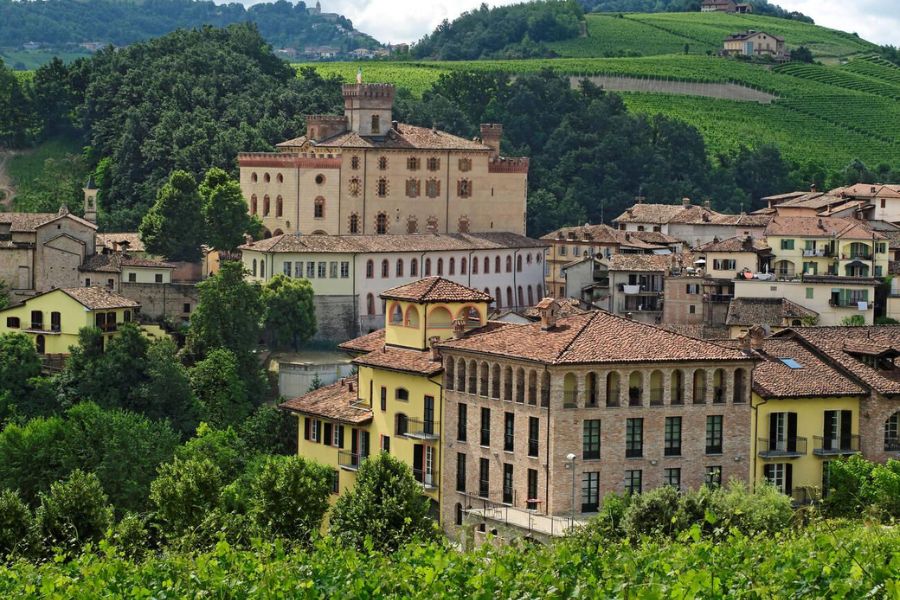
Planning a trip to taste Barolo at its source is one of the most rewarding experiences for wine lovers. The best time to visit is spring or fall when the weather is mild and you can see the vineyards at their most beautiful. Make sure to book tastings in advance at both traditional and innovative producers to understand the full spectrum of what this remarkable wine has to offer.
Exploring the Origins and Royalty of Barolo
Barolo’s prestigious heritage stems from the rugged hills of Piedmont in northern Italy, where tradition and nobility intertwine to create one of the world’s most celebrated wines. This DOCG-classified treasure has earned its royal reputation through centuries of exceptional winemaking and royal patronage.
The Nebbiolo Grape and Barolo’s Birth
The story of Barolo begins with the Nebbiolo grape, a finicky but remarkable variety native to Piedmont. As I wandered through the rolling Langhe hills on my first visit, local winemakers explained how this grape thrives in this specific microclimate. Nebbiolo takes its name from “nebbia” (fog), which blankets these hills during harvest.
Barolo wasn’t always the powerful, age-worthy wine we know today. In the mid-19th century, it transformed from a sweet wine to a dry style through innovations in fermentation techniques. French enologist Louis Oudart played a crucial role in this evolution, helping create the structured, tannic profile that defines modern Barolo.

The strict DOCG regulations require Barolo to age at least 38 months before release, with 18 months in oak barrels. This patience rewards drinkers with incredible complexity.
Unveiling the King of Wines
Barolo earned its “King of Wines” title in the 19th century when it became the preferred choice of the House of Savoy, the royal family that would later rule unified Italy. I’ve heard local producers proudly recount how King Carlo Alberto and other nobles developed a passion for this remarkable wine.
The nickname “Wine of Kings, King of Wines” stuck as Barolo’s reputation spread throughout Europe’s aristocratic circles. What makes it truly regal is its powerful structure, intense aromas of tar and roses, and exceptional aging potential.
When I first tasted a properly aged Barolo, I understood its royal status immediately. Few wines deliver such a profound drinking experience. The magic happens in five specific communes: Barolo, La Morra, Serralunga d’Alba, Castiglione Falletto, and Monforte d’Alba – each imparting distinctive characteristics to their wines.
Deciphering Barolo’s Sensory Mystique
When I first encountered Barolo, it was like meeting a complex character with layers waiting to be unraveled. This legendary wine offers a sensory journey unlike any other, with distinctive aromatic profiles and flavor complexities that evolve both in the glass and over decades in the cellar.
Tantalizing Tannins and Flavor Profile
Barolo’s commanding presence stems from the Nebbiolo grape’s naturally high tannin content. These tannins create that signature mouth-drying sensation that might seem intimidating at first but becomes captivating with time.
The flavor profile typically reveals tar and roses – a classic descriptor I’ve found remarkably accurate. Young Barolos showcase vibrant red fruits like cherry and raspberry, often with notes of:
- Dried herbs (thyme, sage)
- Licorice and anise
- Truffle and forest floor
- Orange peel and dried flowers
With age, these transform into more complex tertiary aromas. I’ve noticed that properly aged Barolos (10+ years) develop incredible leather, tobacco, and earthy mushroom notes while the tannins soften beautifully.
Barolo Chinato: A Herbal Twist to Tradition
During my visits to Piedmont, I discovered Barolo Chinato, a special aromatic wine that deserves more attention. This traditional digestif starts with Barolo wine, then gets infused with herbs, spices, and quinine bark.
The production process combines Barolo’s inherent complexity with a carefully guarded blend of botanicals. Each producer guards their recipe closely, but common ingredients include:
- Quinine bark (the “china” that gives it its name)
- Cloves and cinnamon
- Cardamom and vanilla
- Local herbs and roots
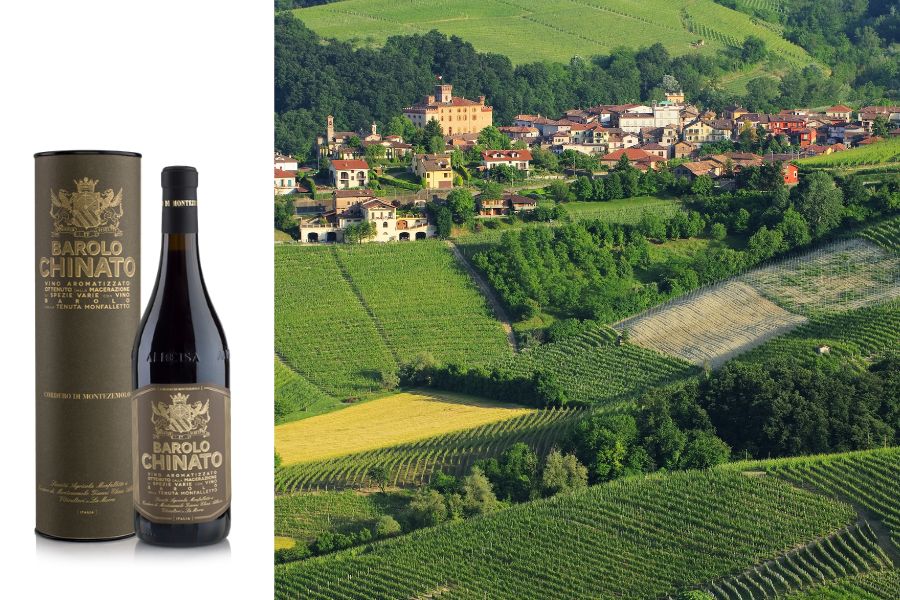
The result is a bittersweet elixir that perfectly caps a hearty Piedmontese meal. I love sipping it alongside dark chocolate or almond biscotti. The warming spices complement Barolo’s natural characteristics while adding fascinating new dimensions.
Navigating the Prestigious Piedmont Wine Regions
Piedmont’s wine landscape offers an incredible journey through some of Italy’s most celebrated vineyards. The rolling hills create distinct microclimates that give each wine its unique character and complexity.
Discovering the Terroir of Barolo Wines
I’ve found that understanding Barolo’s terroir is essential to appreciating what makes these wines so special. The region sits in the Langhe hills, where the Nebbiolo grape thrives in clayey-calcareous soils. Each of the five main communes—Barolo, La Morra, Serralunga d’Alba, Monforte d’Alba, and Castiglione Falletto—produces wines with distinct personalities.
La Morra and Barolo typically offer more elegant, aromatic wines with softer tannins. During my visits, I’ve noticed these areas have more limestone in their soil.
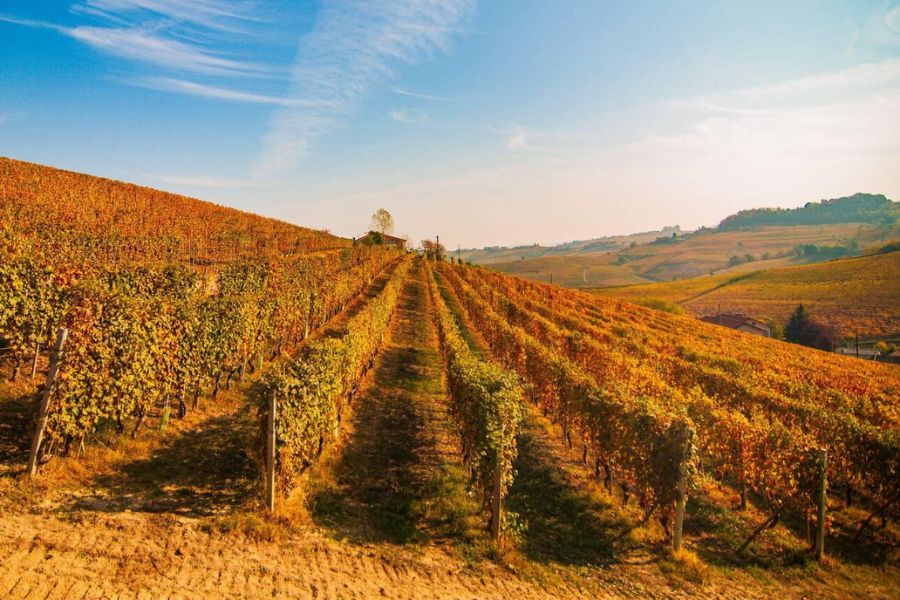
The eastern communes like Serralunga d’Alba create more structured, powerful wines with longer aging potential. The fog (nebbia in Italian, which gives nebbiolo its name) plays a crucial role by extending the growing season.
Comparing Barolo and Barbaresco
Though both Barolo and Barbaresco feature the Nebbiolo grape, they deliver noticeably different experiences. Barbaresco’s slightly warmer climate and lower elevation result in wines that typically reach maturity earlier than their Barolo counterparts.
While wandering through Barbaresco’s vineyards, I’ve noted how the soils contain more sand, yielding wines with gentler tannins and often more immediate approachability. Barbaresco requires a minimum of 2 years aging versus Barolo’s 3 years.
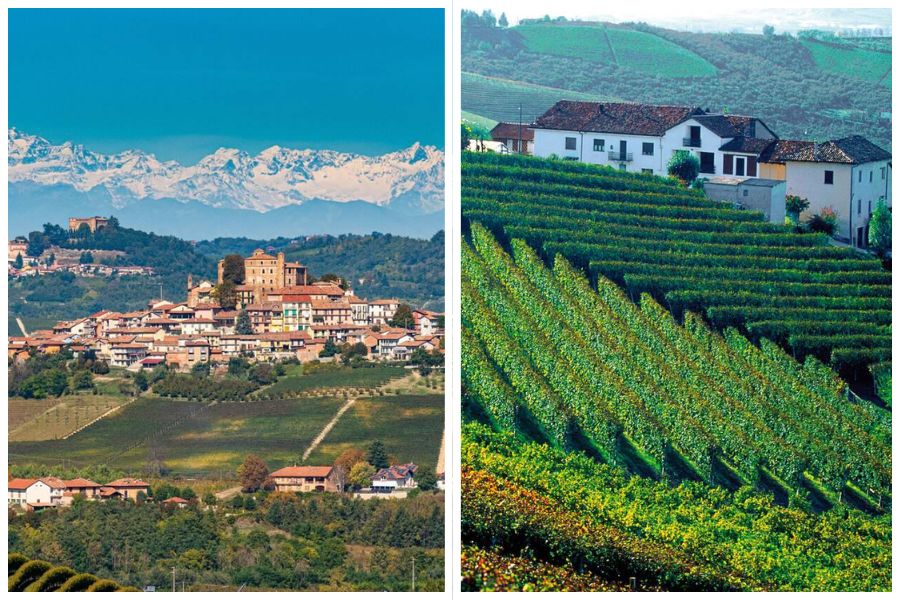
The price difference makes Barbaresco an excellent entry point to high-quality Piedmont wines. Many producers craft wines in both regions, offering fascinating side-by-side comparisons of how terroir affects the same grape variety.
Key producers to try:
- Barolo: Conterno, Rinaldi, Bartolo Mascarello
- Barbaresco: Gaja, Produttori del Barbaresco, Bruno Giacosa
The Art of Aging: Unlocking Barolo’s Cellar Potential
Barolo wines are renowned for their exceptional aging capabilities, transforming from austere young wines into complex masterpieces over time. The high acidity and robust tannin structure serve as natural preservatives, allowing these wines to evolve beautifully for decades.
Aging Potential of Kingly Concoctions
I’ve found that Barolo wines typically need a minimum of 8-10 years before they begin to show their true character. The tannins gradually soften while flavors deepen and integrate.
Most quality Barolos can age 15-20 years, with exceptional vintages lasting 30+ years. This extended maturation happens because of three key factors:
- High acidity levels from the late-harvested Nebbiolo grapes
- Robust tannin structure that slowly breaks down
- Terroir influence from different vineyards across the region
When cellaring Barolo at home, I recommend keeping bottles at a consistent 55°F (13°C) with 70% humidity. The wines should rest horizontally in a dark environment free from vibrations.
Riserva Wines: The Extended Aging Path
Barolo Riserva represents an elevated expression of aging excellence. These special wines must spend a minimum of 5 years maturing before release—at least 3 years in wood and the remainder in bottle.
I’ve tasted Riservas that display remarkable complexity with notes of:
- Dried roses and violets
- Truffle and forest floor
- Preserved cherries and plums
- Leather and tobacco
The extended aging process intensifies Barolo’s signature “tar and roses” profile. When visiting producers in the region, I make it a point to try vertical tastings of both standard Barolos and Riservas to appreciate how differently they evolve over time.
Small-production Riservas from top crus often command premium prices but offer extraordinary aging potential, sometimes exceeding 40 years.
Pairing Barolo: The Culinary Journey
Discovering the perfect food companions for Barolo has been one of my most rewarding wine adventures. This noble Italian red demands thoughtful pairing to truly showcase its complex character.
Barolo and Food: A Harmonious Blend
When I first tasted Barolo alongside a traditional Piedmontese meal, I understood why locals call it “the wine of kings.” Its high tannins and acidity make it ideal for rich, fatty dishes that can stand up to its powerful structure.
The best pairings I’ve found include:
- Wild boar ragù with fresh tagliatelle
- Beef stew or braised short ribs
- Pork chops with mushroom sauce
- Tomato-based pasta dishes with meat
Northern Italian cuisine offers perfect companions for Barolo. I’ve noticed that slow-cooked meats bring out the wine’s earthy notes, while the tannins cut through fatty textures beautifully.
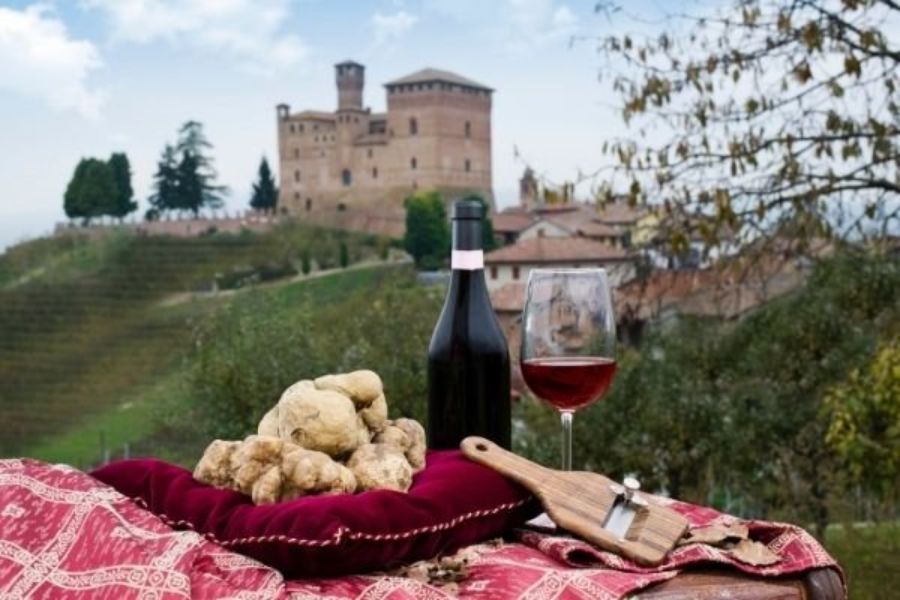
Truffle dishes are another magnificent pairing. The earthy intensity of white truffles shaved over risotto creates a magical experience with an aged Barolo.
Cheese and Barolo: A Classic Pairing with Grana Padano
Grana Padano has become my go-to cheese when serving Barolo. This hard, aged cheese from northern Italy offers nutty, savory notes that complement the wine’s complexity.
Unlike very soft cheeses that might clash with Barolo’s tannins, Grana Padano has enough structure and fat content to create balance.
I like to serve it as part of an antipasti board with dried fruits. It’s also great grated over pasta dishes or in thin shavings as a pre-dinner bite.
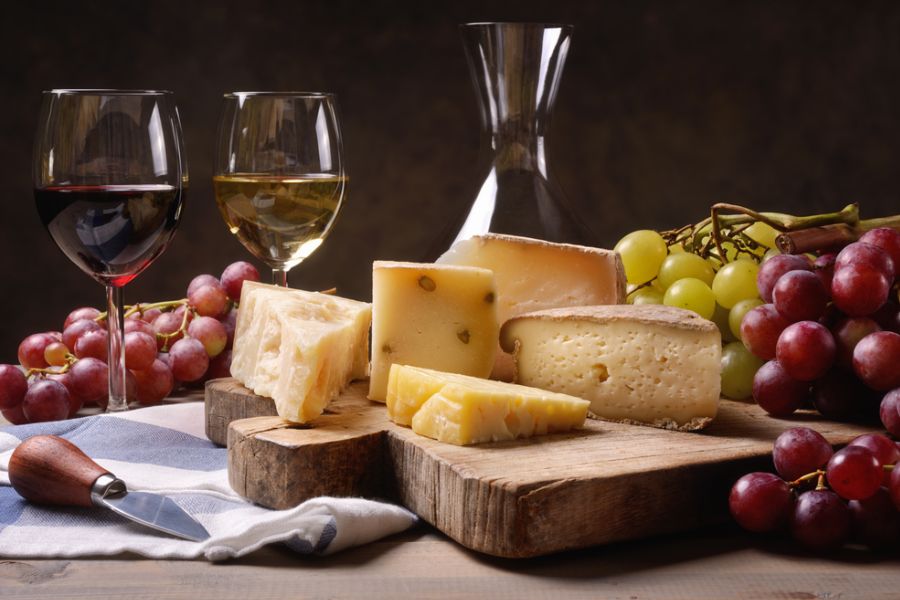
Other cheeses that work wonderfully with Barolo include aged Pecorino and Parmigiano-Reggiano. The key is finding cheeses with enough richness to match Barolo’s intensity.
I’ve found that letting both the cheese and wine breathe a bit before tasting together is the best approach. This allows the flavors to open up and create a more harmonious experience.

